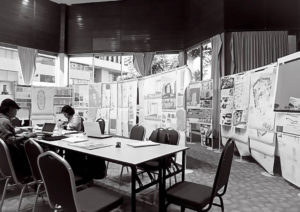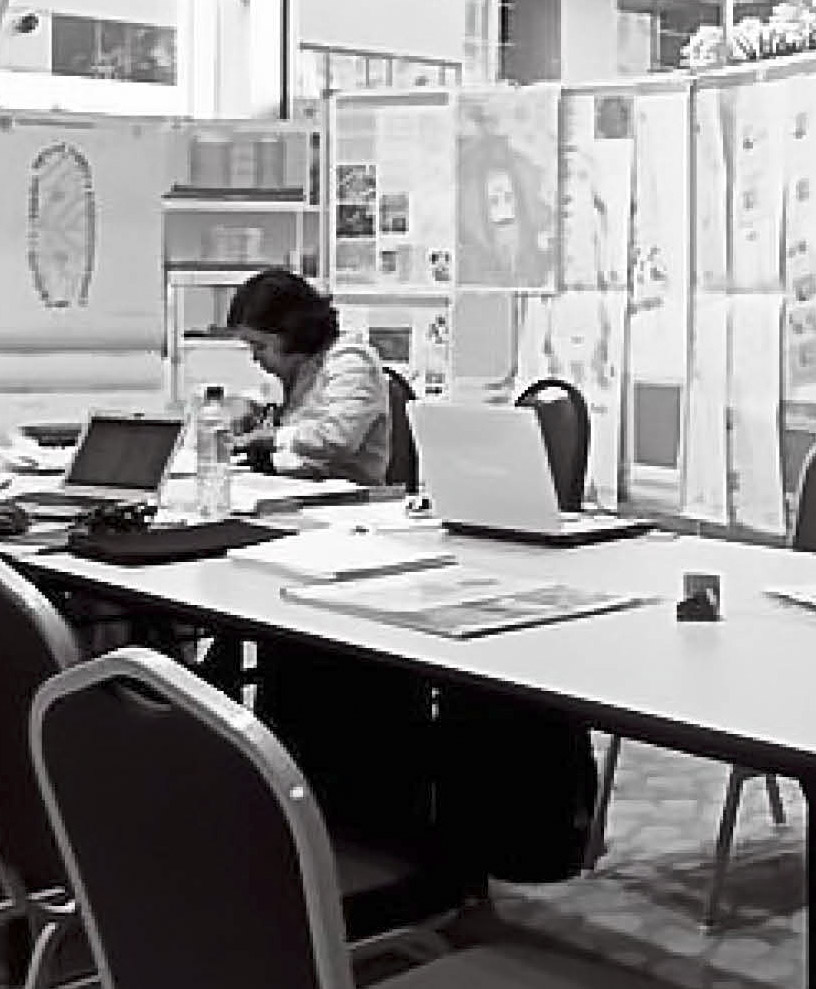A teaching method sets the principles for instructions to be implemented by teachers to achieve the desired learning by students. I also see that the method in teaching Architecture as a challenge for the teachers to produce a basic operational framework, the ‘teaching tools’ for the development of the critical and creative design thinking exercises of the students. This raises the question of what would be the appropriate methods of teaching architectural design that could be put in place in a practical and logical manner with the combination of Mathematics, Science and Arts.
Grounded in reality of the key philosophy set out earlier, creativity cannot disregard feasibility and technique in any stage of design. In a nutshell, designers including architects tend to work in a solution focussed manner. In doing so, the theoretical and practical aspects of design will need to be worked out in parallel consistently. And so, my aim is governed by this notion, i.e. to guide the students postulating a design approach with sufficient consideration on the constructive feasibility of the proposed ideas, from concept through to detail. One way to do this in parallel to helping students develop their critical thinking skill is to create a positive learning environment whilst respecting and promoting intellectual diversity amongst them, from various backgrounds and culture.
Students need to be taught to develop their design as a ‘problem-solving’ exercise. From the four keystones of my teaching philosophy I turn to the development of the methodology in executing the learning essentials to Expose, Experience, Explore and to Exploit the design learning paradigm on the subject of Architecture. The question now is how I put these approaches into practice, in cradling a ‘creative workshop’ through which the production of design is academically and logically formulated. The tools of the learning paradigm in the operation of my method of teaching are described as below;
Expose the architecture. As said earlier, my philosophy has been greatly influenced by the first exposure I have had to Architecture. That said, I see that the first step to take in guiding the students to learning architecture is to adopt the notion of to ‘expose’ the students as the specific operational tool to teaching. At the beginning, students will need to be exposed to the reality of architecture. School trips need to be planned ahead with the goal of showing the students the actual scenario of architecture living professions. They need to encounter a first-hand experience in order to be able to be stimulated and appreciate the profession. Simultaneously, they need to be engaged with the professional architectural community, giving those opportunities for the students to network and grow as professionals. Students should be encouraged to visit various examples of buildings and places, and be guided through to use their observations about the changing face of the local context (and later to be develop in a broader scope of analysis) to create their own ideas on architectural representation of their own.
Experience the architecture. The next step is to allow the students to experience the field in articulating the mathematical, art and scientific aspects of architecture. They need to find a way in communicating a clear thoughts in their thinking of architecture. With the right experience nurtured in, students could then be able to create a story, a journey through an informative and interactive design thinking and production. Examining the precedent and gathering information through this journey is virtually important in acquiring knowledge and skills in the architectural practice they need. Indirectly, through the journey, the students will encounter and thus could possibly discover the related problem to the world of architecture profession. Along the way, the students could also understand the more tangible aspect of architecture through reading, attending workshops, and involving themselves in the hands on experience of the process.
Explore the architecture. Studio is the place for the students to have the chance to create their architecture, by virtue of unleashing their own interpretation of the problems given at hand. They should be let free to experiment their ideas by perusing some successful and less successful approaches to building design development. Through exploring, students could learn how different approaches in design development would response to the different proposed plans and schemes.This exploration should be granted to students from an early stage of their studies, so as to help foster their creativity, giving freedom to exude their own creative thinking and capture them to put forward potential new approaches and career paths on the diversity of architecture. Whilst exploring architecture could help students to be more innovative in experimenting new ideas, it should also account for the realisation on man and environment relationships that needs to be implicated in the comprehensive development and understanding in the design thinking process.
Exploit the architecture. Finally, I facilitate the need for the students to seek for advancement of their architectural creativity by exploiting the design of their ideal building to response to the socio-economic process of the built environment. This activity requires them to think of the big questions prior to probing into the systematic solution for the effective function of the design, within the local and global context of the proposed scheme. By exploiting the surrounding demanded necessities, students could suggest how a certain design development could be improved further, socially as well as economically. They could have the opportunity to create innovative buildings and schedules to meet the needs they identify, postulating a new strategies and approach to implementing the solutions. Exploiting is also about improving whilst seeking for and creating a new opportunities, enlightening the full potential of architecture in channelling it through the creative thinking pedagogy. Alas, the Architecture development should also provide some measurable business values, in advancing the critical thinking process for the future development. Nowadays, strategic business thinking is essential in nurturing the profession in responding to the rapid growth of technology of the digital world that of demanded in the profession.
At its core, the method of teaching architecture should relate to and integrate the need of the students to acquire learning between the design studio and the conventional classroom set up. What matters the most is for a mentor to develop a teaching technique in a fun learning environment, particularly in the Design Studio, as it is in the studio that the big part of learning activities of Architecture programme occurs. Students need to be guided gradually in their critical mind development, depending on their own accepted reasonable pace. In helping them to be developed as critical thinkers, teachers must also help the students to become a proficient critical thinker; they must become the master of their own conceptualizations. They need to be let loose to have their individual personal way to conceptualise things by means of their own ideas in making sense of things. They need to have their own sense of “autonomy and freedom of thought”, in finding their own transcending critical artistic contentment through their own creative architectural production.
And so I believe, the paradigm of teaching and learning Architecture with the idea to Expose, Experience, Explore and Exploit will help me committing myself to bring out the best in the students whilst fostering the ‘Excellence’ on them.





